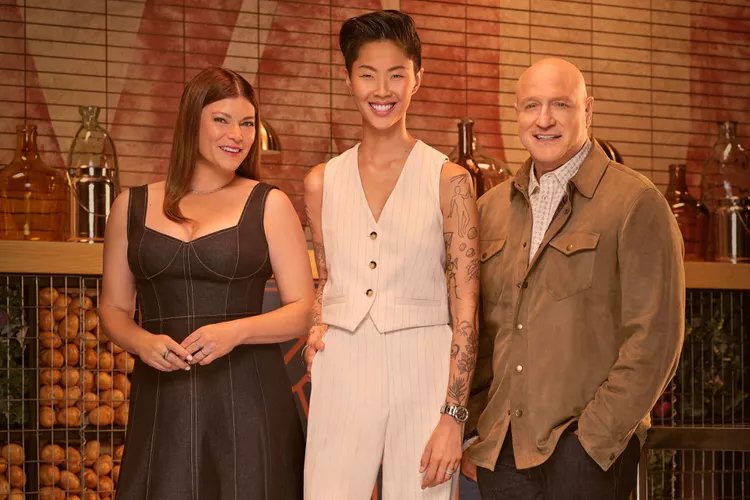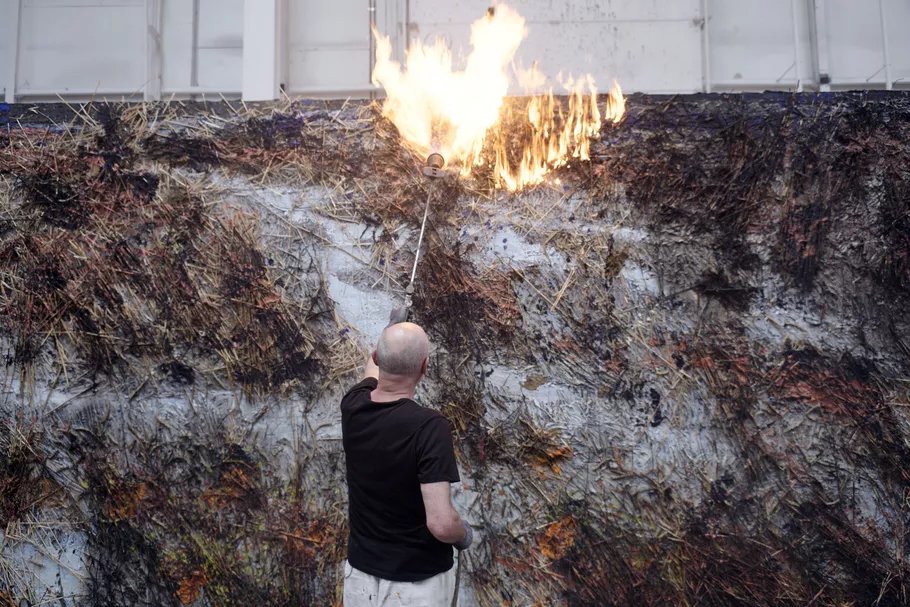Dough!!
I make bread.
It's nothing fancy or exotic. I'm not going to win any awards. I do it because I like bread and homemade bread is usually better than what I find in stores. Usually.
I started when an old graduate school friend posted a photo of his own homemade loaf. It looked nice, and he touted the book he used: Flour, Water, Salt, Yeast by Ken Forkish.
To make it the Forkish way, you need to buy a few things: Two of those big food buckets that you usually see filled with vegetable soup or chocolate pudding at your kid's school cafeteria. A couple of those fancy baskets (brotform or banneton or whatever). And a couple of heavy pots.
If you want to make sourdough bread, you start with the starter. Mix flour and water and let it sit on your counter for a day. Scoop some of the goop out and add more flour and water. Stir it up. Do this every day until it starts to stink. That's sourdough (or levain, as the fancy folks call it).
To turn this into bread, dump flour and water in one of those big buckets. Squoosh it around until it turns into dough. Let it sit. Then add some starter, salt and a little yeast. (Yes, I cheat by adding yeast--don't report me to the sourdough police.) Squoosh it around for five minutes or so. Then leave it alone for four hours. After that, divide it into two of those fancy baskets. Wrap a plastic bag around each one and stick it in the fridge. Then watch a silly movie on Netflix and go to bed.
In the morning put two covered pots in the oven and turn it up full blast. When the pots are really hot, take them out and dump a basket of dough into each one. Put them back in the oven. After 30 minutes, take the covers off. After ten more minutes, take them out of the oven, dump the bread out onto a rack and stand there listening to it for five minutes. The loaves will crackle and you don't want to miss that.
That’s the simple version of the “Forkish method.” In his very thorough book, he devotes dozens of pages and photos to help you get it just right. That's where I started—weighing ingredients and timing things exactly. But after doing it for seven years, those exact instructions fade away and things get a little fuzzier. And more fun. Instead of obsessive measuring, you “eyeball” and get to know how the dough should feel. Too stiff? Too goopy? Add a little of this or that. Is it brown enough after the timer goes off? Leave it in the oven a bit longer. Want a denser chew? Add a little whole wheat flour. The world is your loaf. Check out Ken Forkish’s book or YouTube channel and have fun.
Chef Boy-O-Boy
Like most kids, I had techniques for avoiding foods I didn’t like. Load up a mouthful of dreaded asparagus and asked to be excused, then empty it into the toilet. Hide some Brussels sprouts under the rim of the plate. Slip a chunk of dry pork roast into a pocket and later feed it to the dog. Picky eaters of the world unite.
I thought of those days recently when I started watching Top Chef : Wisconsin, the latest edition of the popular cooking competition. Twenty years ago, it was a new idea. The “competition” reality show sweepstakes had started with Project Greenlight (2001) and Project Runway (2004). Cooking was the next logical step. Top Chef’s success (it premiered in 2006) then transformed the 10-year-old Food Network from a host of how-to cooking shows (watch Jamie Oliver make a nice soufflé) to an olympics of food competitions—various “wars,” “showdowns”, “bake-offs,” and “battles.”
Contestants Dan Jacobs and Manny Barella in Top Chef : Wisconsin.
Not surpisingly, these shows thrive on the personalities of the contestants. Who’s the one with the troubled past? Thwarted dreams? Which one has the potential Cinderella story? Who are you going to root for?
Then there are the judges tables, where a few celebrity chefs help make millions of viewers feel “palatably” stupid.
In their ten-minutes of air time, the judges warm the heart of picky eaters everywhere, complaining about texture, sweetness, balance, and of course, the umami of it all. X doesn’t balance Y; Z overwhelms Q; C doesn’t bring out enough D; etc., etc.
Gail Simmons, Kristen Kish, and Tom Colicchio of Top Chef : Wisconsin.
I like good food, but my taste buds seem pedestrian by comparison. And I’m just fine with that. The food world, however, seems obsessed with turning everyone into a gourmand. Sip this coffee and you’ll detect "notes" of clementine, hibiscus or baking spices. Here’s a wine redolent of volcanic ash, elderberry and citrus peel. Ditto beer and chocolate. And just when you thought it was fine to drink from the tap, meet the latest batch of “water sommeliers!”
I understand there’s a lot at stake here. Winning Top Chef has launched people into the ever-expanding world of celebrity chef-dom. And even as the assignments get more absurd—”create a dish with hops as the main ingredient” or “create a dish that reflects the values of Frank Lloyd Wright’s architecture”—it’s fun to watch the chefs go at it.) But I suspect Tom Colicchio and his ilk are also turning us into incredibly picky eaters, folks that expect every meal to be a symphony of textural contrasts and savory harmonics. Sometimes, ya know, you just want a good burger or a fresh, chilled salad that isn’t overdressed. Or maybe, a nice slice of homemade sourdough bread.
Believe It or Not
Ripley, the new Netflix series by Steven Zaillian, follows the basic outline of Patricia Highsmith’s 1955 novel (The Talented Mr. Ripley). An unassuming New York grifter has an interesting opportunity drop into his lap. The wealthy father of an acquaintance hires him to travel to Italy—all expenses paid—and persuade his son, Dickie Greenleaf, to come home and take his place in the family shipbuilding business. Dickie is living a charmed, trust-fund life on the coast of Italy and Ripley eases into a renewed but calculating friendship. Unassuming no longer, Ripley devises the grift of all grifts—a scam that offers him a new life.
For Zaillian, the devilishness is in the details. Known primarily for his superb screenplays—Schindler’s List, Moneyball, Gangs of New York—he’s recently shown himself to be a master of visual storytelling, creating, with Richard Price, the moody courtroom drama The Night Of and now helming Ripley.
Filming in noir-ish black and white (stills above), Zaillian surrounds his characters in a rich chiaroscuro, using the Italian architecture as a moody backdrop. The style hearkens both to cinema’s film-noir legacy and to the Italian painter Caravaggio, with whom Ripley becomes mildly obsessed over the course of the film. Zaillian even includes an opening prologue in one of the episodes that features the painter’s infamous criminal history.
Against these rich visual textures, Zaillian’s dialogue is almost ridiculously spare, giving Andrew Scott and his other actors a chance to dig deep in the silent pauses. Arriving in Italy, Scott is particularly brilliant in charting Ripley’s transformation from sheepish American outsider—a bit of a rube, frankly—into a savvy player in the games of the Italian jet set. This a languorous and satisfying cat-and-mouse game that ends with the possibility of another season. Here’s hoping.
Wenders and Kiefer
Anselm Kiefer pedals around his art in Wim Wenders’s Anselm.
Looking for an interesting cinema double bill? How about showing Wim Wenders’s two latest films. Perfect Days (2023) is about the simple life of a Japanese man who cleans bathrooms for a living. Anselm is about the painter Anselm Kiefer, a celebrated German artist whose work “reflects upon Germany’s post-war identity and history” and “engages the complex events of history and the ancestral epics of life, death, and the cosmos.” To say Kiefer is a maximalist to Perfect Days’ minimalism doesn’t quite capture the difference. Most of Kiefer’s works are immense and he shows and creates them in immense spaces.
Kiefer “paints.” From Wim Wenders’ Anselm.
Wenders’s documentary—I saw it in 3D at the Milwaukee Film Festival—spends a good part of the film taking us through La Ribaute, a 200-acre abandoned French silk factory that is part studio and part museum. Kiefer’s “paintings” are typically as big as billboards and go far beyond oils or acrylics. In the film, we see him “painting” with a blowtorch—burning straw that has been embedded in a painting’s surface—and with molten lead—pouring it directly onto a “canvas” from an industrial cauldron.
Anselm offers some context of Kiefer’s life work. A German cause célèbre since the early ‘70s, there is plenty of news footage and interviews to draw on. Wenders does create a narrative of sorts, even having a child actor play Kiefer as a boy, moodily taking in the German landscape. But the film’s most satisfying moments are the shots where the camera lingers over Kiefer’s works: surreal gowns stands alone in a forest, a lead airplane sprouts wilted sunflowers, bleak towers of concrete blocks dot a desolate landscape, shelves of books with pages of poured lead. It’s a treat to see it on the big screen, but it is currently streaming on The Criterion Channel.
For Something Completely Different…
After Ripley and Anselm, I think a little light verse is in order. Here’s Billie Collins’s wonderful tribute to a spring day.
“Let us out!”
Today
If ever there were a spring day so perfect,
so uplifted by a warm intermittent breeze
that it made you want to throw
open all the windows in the house
and unlatch the door to the canary's cage,
indeed, rip the little door from its jamb,
a day when the cool brick paths
and the garden bursting with peonies
seemed so etched in sunlight
that you felt like taking
a hammer to the glass paperweight
on the living room end table,
releasing the inhabitants
from their snow-covered cottage
so they could walk out,
holding hands and squinting
into this larger dome of blue and white,
well, today is just that kind of day.
—Billy Collins, 2000
Have a good week.
















